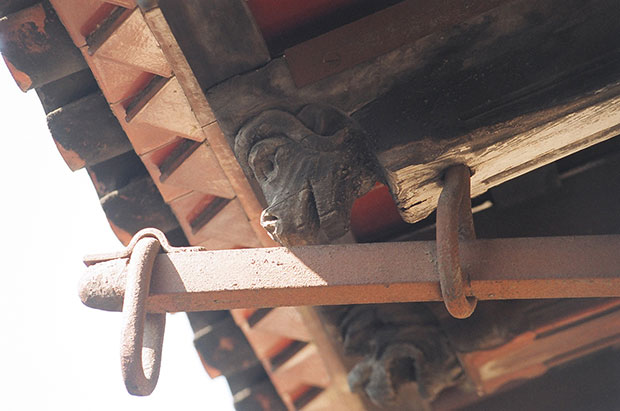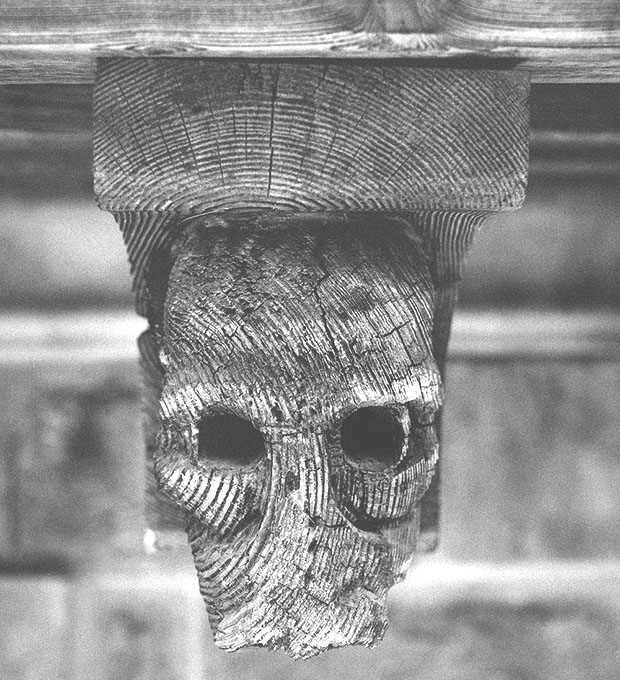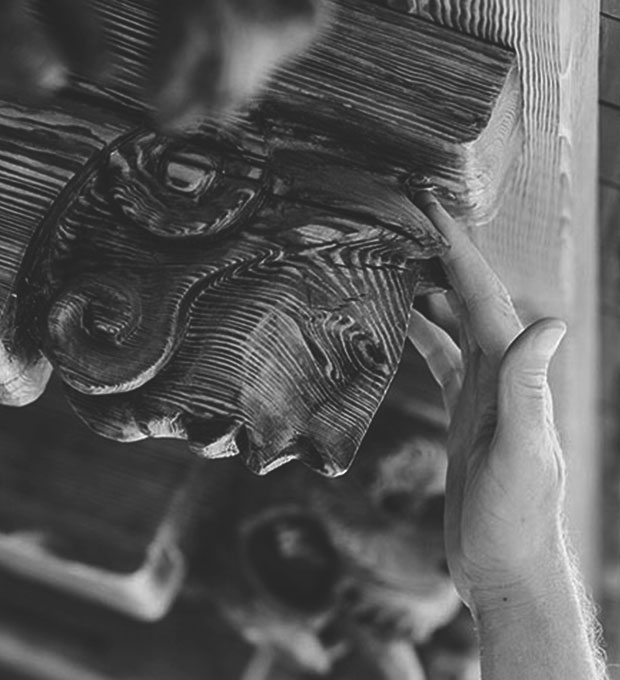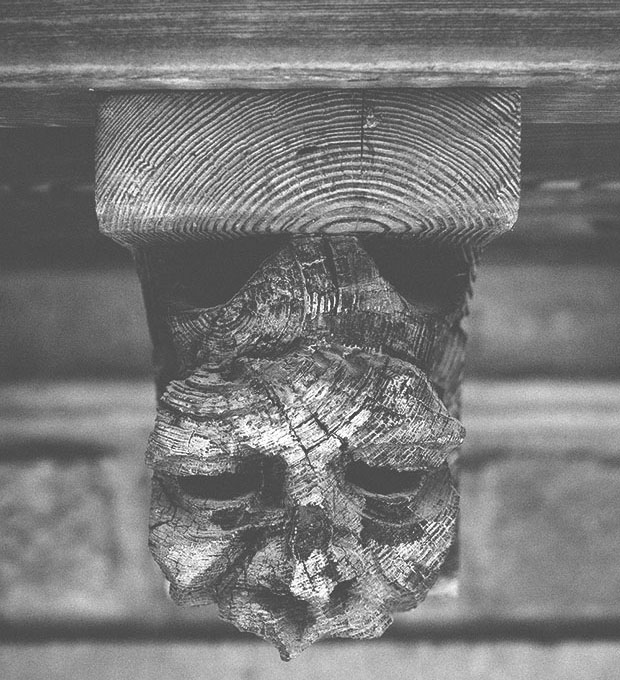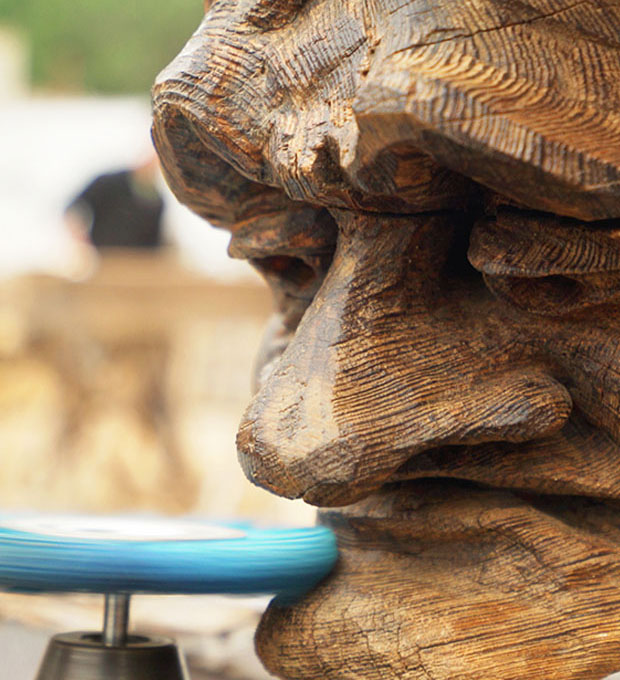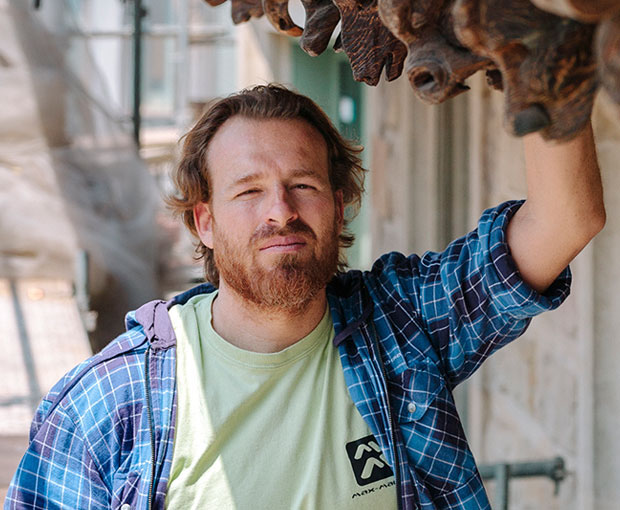Casa Burés’s 86 wooden heads under the eaves on its façade are among its most magical feature.
The origin of these beams with carved wooden heads dates back to the Middle Ages, when medieval craftsmen regularly pushed the limits of their imaginations to create a series of beasts and imaginary beings that evoked even older myths.
Casa Burés’s owner wanted the building to have this medieval feature which according to popular belief in the Middle Ages, served to drive away evil spirits.
The identity of the craftsmen who carved Casa Burés’s 86 heads is still unknown. However, we do know that they chose to make them out of melis pinewood, a highly valued wood during that period.
